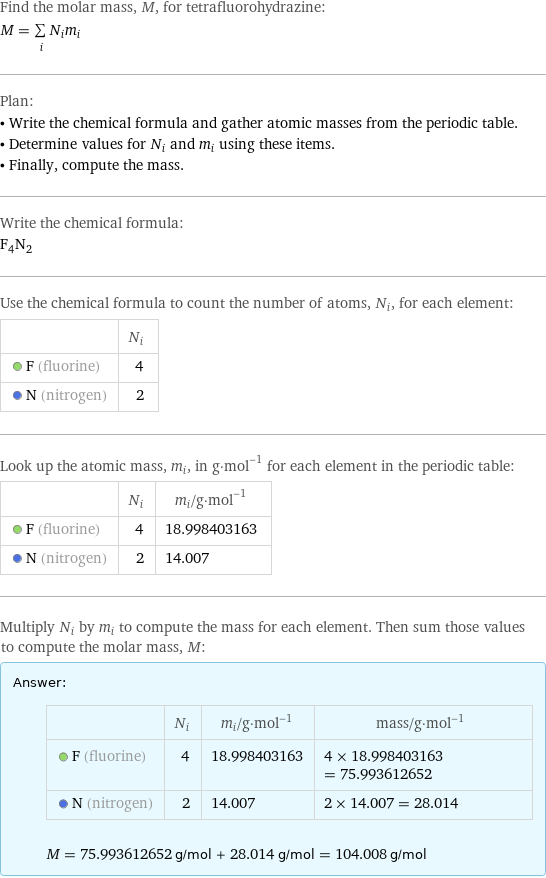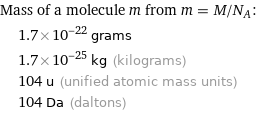Input interpretation

tetrafluorohydrazine | molar mass
Result

Find the molar mass, M, for tetrafluorohydrazine: M = sum _iN_im_i Plan: • Write the chemical formula and gather atomic masses from the periodic table. • Determine values for N_i and m_i using these items. • Finally, compute the mass. Write the chemical formula: F_4N_2 Use the chemical formula to count the number of atoms, N_i, for each element: | N_i F (fluorine) | 4 N (nitrogen) | 2 Look up the atomic mass, m_i, in g·mol^(-1) for each element in the periodic table: | N_i | m_i/g·mol^(-1) F (fluorine) | 4 | 18.998403163 N (nitrogen) | 2 | 14.007 Multiply N_i by m_i to compute the mass for each element. Then sum those values to compute the molar mass, M: Answer: | | | N_i | m_i/g·mol^(-1) | mass/g·mol^(-1) F (fluorine) | 4 | 18.998403163 | 4 × 18.998403163 = 75.993612652 N (nitrogen) | 2 | 14.007 | 2 × 14.007 = 28.014 M = 75.993612652 g/mol + 28.014 g/mol = 104.008 g/mol
Unit conversion

0.104008 kg/mol (kilograms per mole)
Comparisons

≈ ( 0.14 ≈ 1/7 ) × molar mass of fullerene ( ≈ 721 g/mol )

≈ 0.54 × molar mass of caffeine ( ≈ 194 g/mol )

≈ 1.8 × molar mass of sodium chloride ( ≈ 58 g/mol )
Corresponding quantities

Mass of a molecule m from m = M/N_A: | 1.7×10^-22 grams | 1.7×10^-25 kg (kilograms) | 104 u (unified atomic mass units) | 104 Da (daltons)

Relative molecular mass M_r from M_r = M_u/M: | 104